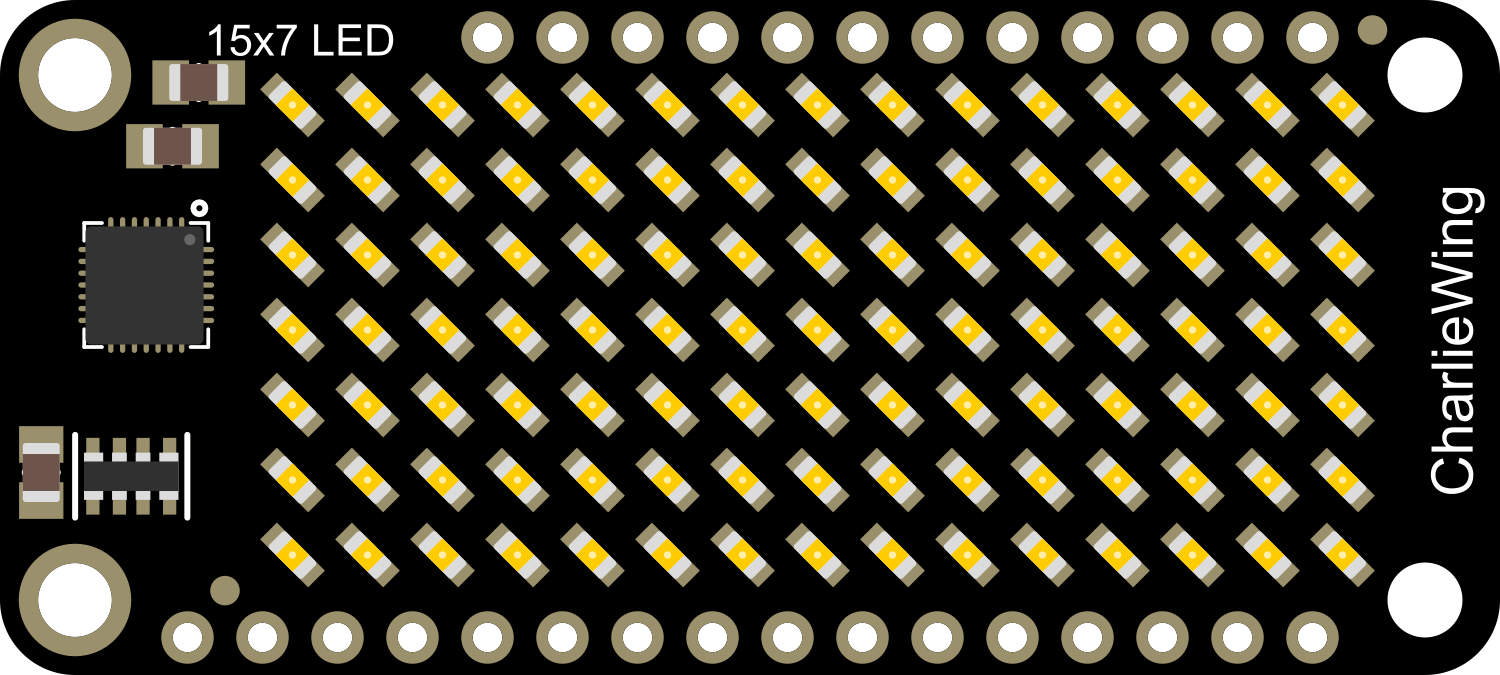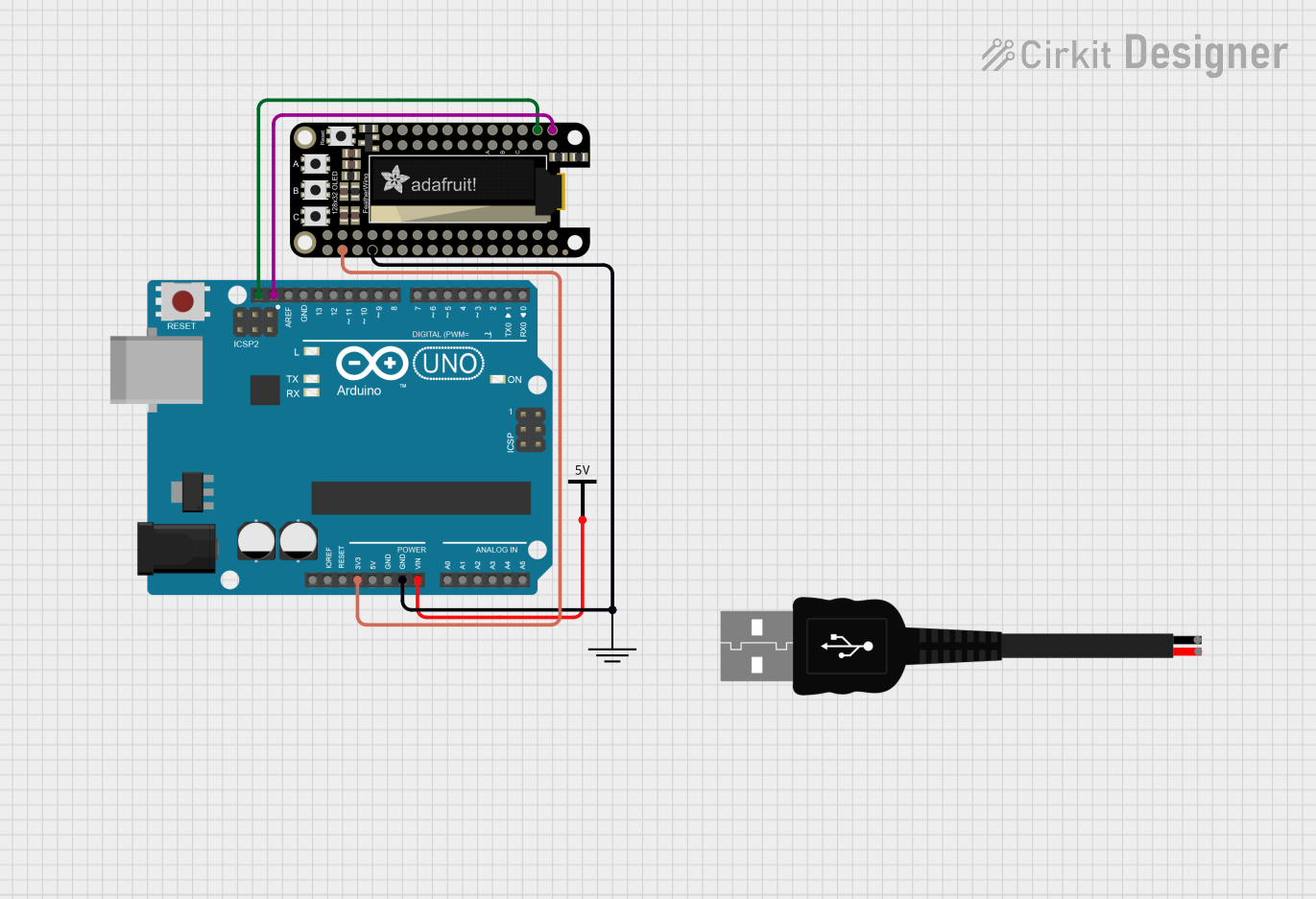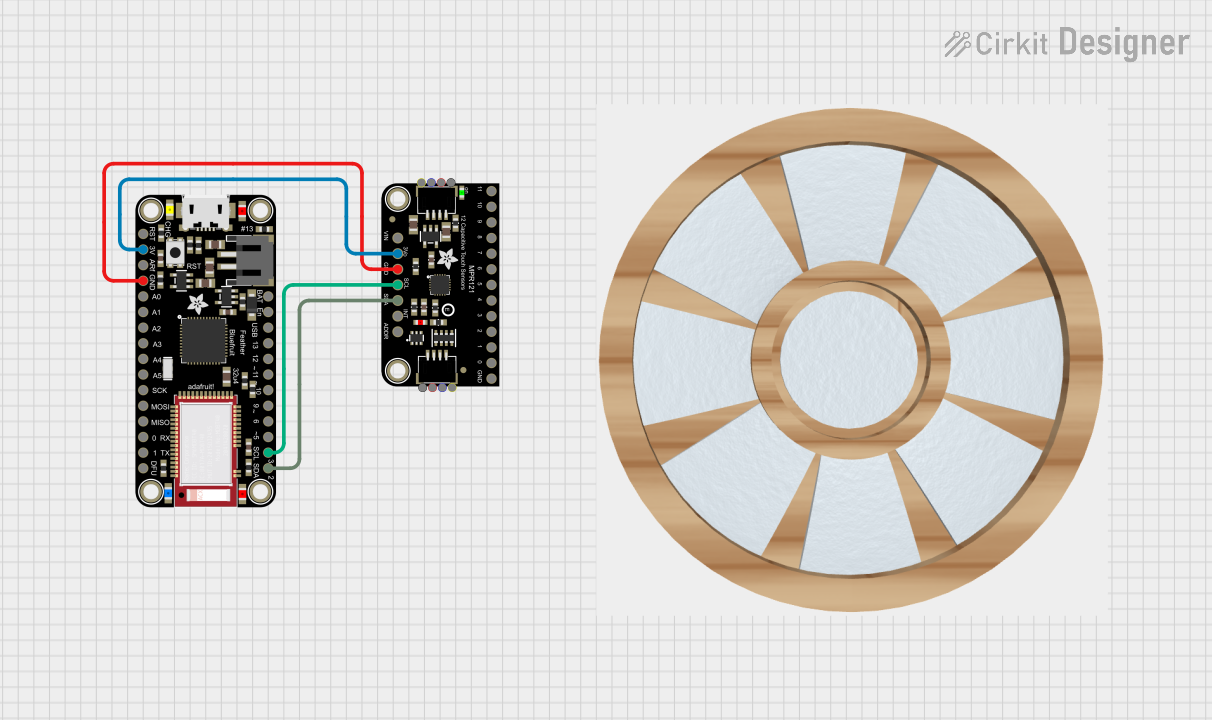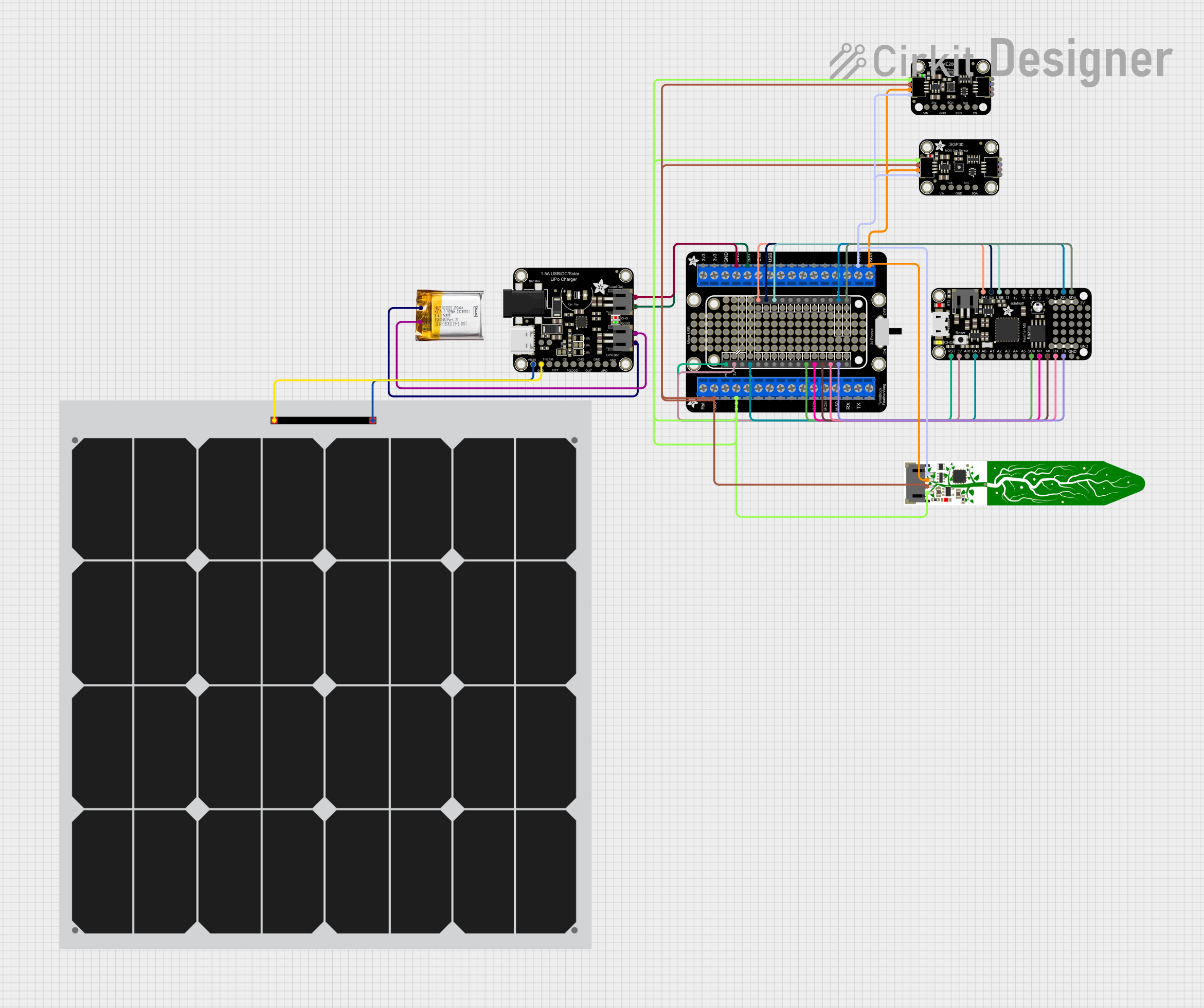
How to Use Adafruit Yellow 15x7 CharliePlex FeatherWing: Examples, Pinouts, and Specs

 Design with Adafruit Yellow 15x7 CharliePlex FeatherWing in Cirkit Designer
Design with Adafruit Yellow 15x7 CharliePlex FeatherWing in Cirkit DesignerIntroduction
The Adafruit Yellow 15x7 CharliePlex FeatherWing is an add-on board designed for the Feather ecosystem. It features a matrix of 105 yellow LEDs arranged in a 15x7 grid. This LED matrix utilizes Charlieplexing, a technique for driving multiple LEDs with fewer I/O pins, making it an efficient solution for adding a compact display to your projects. Common applications include creating scrolling text displays, simple animations, and status indicators.
Explore Projects Built with Adafruit Yellow 15x7 CharliePlex FeatherWing

 Open Project in Cirkit Designer
Open Project in Cirkit Designer
 Open Project in Cirkit Designer
Open Project in Cirkit Designer
 Open Project in Cirkit Designer
Open Project in Cirkit Designer
 Open Project in Cirkit Designer
Open Project in Cirkit DesignerExplore Projects Built with Adafruit Yellow 15x7 CharliePlex FeatherWing

 Open Project in Cirkit Designer
Open Project in Cirkit Designer
 Open Project in Cirkit Designer
Open Project in Cirkit Designer
 Open Project in Cirkit Designer
Open Project in Cirkit Designer
 Open Project in Cirkit Designer
Open Project in Cirkit DesignerTechnical Specifications
Key Technical Details
- LED Color: Yellow
- Matrix Layout: 15 columns x 7 rows
- Dimensions: 50mm x 23mm x 4mm
- Weight: 4.8 grams
- Operating Voltage: 3.3V to 5V DC
- Interface: I2C
- I2C Addresses: 0x70 (default), selectable with solder jumpers
Pin Configuration and Descriptions
| Pin Name | Description |
|---|---|
| GND | Ground, common reference for power and signals |
| 3V | 3.3V power supply input |
| SDA | I2C Data line |
| SCL | I2C Clock line |
| RST | Reset pin, active low |
| A0-A2 | Address selection pins for I2C (solder jumpers) |
Usage Instructions
Connecting to a Feather Board
- Align the headers on the CharliePlex FeatherWing with the corresponding sockets on your Feather board.
- Solder the headers to ensure a secure and reliable connection.
- Ensure that the Feather board is powered off before making the connection.
Programming with Arduino
To control the CharliePlex FeatherWing with an Arduino (such as the Feather M0 or M4), you will need to install the Adafruit LED Backpack library. This library provides functions to easily control the LED matrix.
- Install the Adafruit LED Backpack library via the Arduino Library Manager.
- Include the library in your sketch and initialize the display as shown in the example code below.
#include <Wire.h>
#include <Adafruit_GFX.h>
#include <Adafruit_LEDBackpack.h>
Adafruit_7x15matrix matrix = Adafruit_7x15matrix();
void setup() {
matrix.begin(0x70); // Initialize the display with the I2C address
matrix.setBrightness(10); // Set the brightness level (0 is dim, 15 is bright)
}
void loop() {
matrix.clear(); // Clear the display buffer
matrix.setCursor(0, 0); // Set the cursor position (top-left corner)
matrix.print("Hello"); // Print a message to the display
matrix.writeDisplay(); // Update the display with the buffer content
delay(500); // Wait for half a second
}
Important Considerations and Best Practices
- Always power off the Feather board before attaching or detaching the CharliePlex FeatherWing.
- Avoid touching the LED surface to prevent oils from your skin from affecting the brightness and longevity of the LEDs.
- Use the
setBrightnessfunction judiciously, as higher brightness levels will consume more power.
Troubleshooting and FAQs
Common Issues
- LEDs are not lighting up: Ensure that the FeatherWing is properly seated on the Feather board and that all solder joints are solid. Also, check that the correct I2C address is being used in your code.
- Display is dim: Increase the brightness using the
setBrightnessfunction, and ensure that the power supply is adequate. - Garbled or incorrect display: Make sure the library is correctly installed and that the I2C lines are not experiencing interference.
Solutions and Tips for Troubleshooting
- Double-check the wiring and solder joints if you encounter connectivity issues.
- If you're experiencing I2C communication problems, use an I2C scanner sketch to confirm the device address.
- For any library-related issues, ensure that you have the latest version of the Adafruit LED Backpack library.
FAQs
Q: Can I change the I2C address? A: Yes, you can change the I2C address by soldering the A0, A1, and A2 jumpers on the back of the board.
Q: How many CharliePlex FeatherWings can I chain together? A: You can chain multiple boards together by connecting them side-by-side and ensuring each has a unique I2C address.
Q: Is it possible to use this FeatherWing with boards other than Feather? A: While designed for the Feather series, it can be used with any microcontroller that supports I2C, provided you can match the pinout and voltage levels.
For further assistance, visit the Adafruit support forums or the product's FAQ page on the Adafruit website.